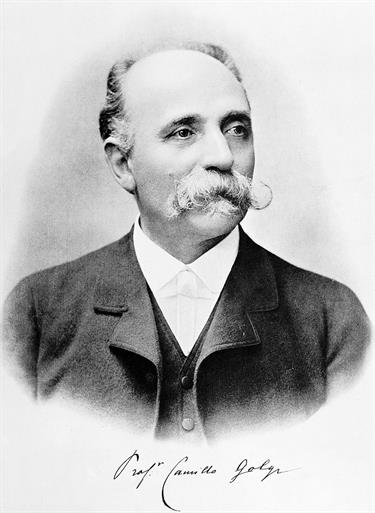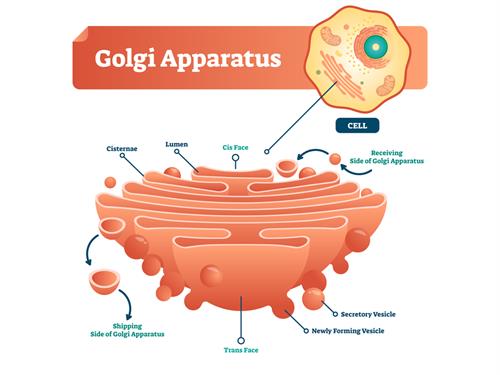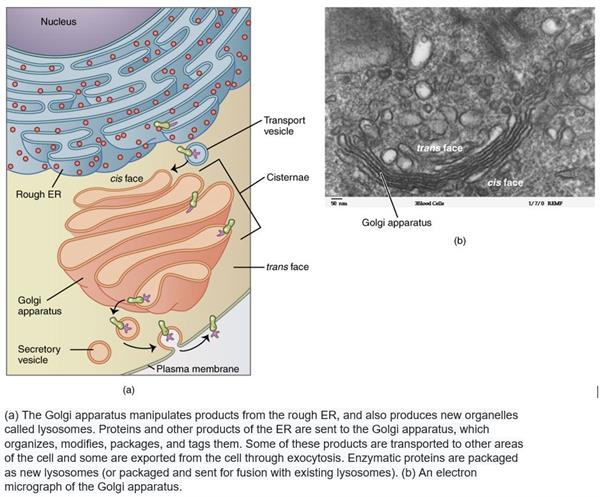PDF chapter test TRY NOW
Materials synthesised in the endoplasmic reticulum have to be transferred to different parts of the cell, this transporting of the materials is done by a specific cell organelle called golgi apparatus.
Camillo Golgi:
Golgi apparatus is a cell organelle which was first described by Camillo Golgi. 

Camilo Golgi
- Camilo Golgi mainly focused his investigations in the nervous system . He first started his investigations in a little kitchen of the hospital, he worked, which he had converted into a laboratory.
Interesting facts about Camilo golgi:
- A revolutionary method of staining was invented by Golgi in which individual nerve and cell structures can be stained. This method is called as Black reaction.
- This black reaction uses a weak silver nitrate solution and is particularly valuable in tracing the processes and most delicate ramifications of cells.
- Throughout his life, he works in improving this technique. He got the Nobel prize in 1906 along with Santiago Ramony Cajal for their work on the nervous system structure.
Note: Ramifications means the asubdivisionof a complex structure or process.
Structure of Golgi apparatus
- Golgi apparatus consists of a system of membrane-bound fluid-filled vesicles (flattened sacs) arranged parallel to each other.
- They arranged in the form of stacks called as cisternae. These cisternae are smooth and flattened in structure.
- Vesicles membranes have connections with the membranes of Endoplasmic reticulum.
- This connection of membrane constitute a complex cellular membrane system.
- It arises from smooth endoplasmic reticulum.
- It is also known as dictyosomes in plant cells.
- Dictyosomes refer to stacks of flat membrane-bound cisternae that together form the golgi apparatus in a plant cell.

Golgi apparatus is called as traffic police of cell because it acts as a way station or an assembly area for the storage, processing and packaging for various cellular secretions. They play a key role in sorting many of the cell's proteins and membrane constituents and directing them to their proper destinations.
Functions of Golgi Apparatus:
- Materials which are synthesized near to ER are transported by golgi apparatus. Golgi apparatus helps in packaging and dispatching these materials to targets inside and outside the cell.
- Storage, modification and packaging of products are the main functions golgi apparatus which are happening in vesicles.
- Also, in some cases, golgi apparatus converts polymers from monomers.
- Formation of lysosomes also occurs with the help of golgi apparatus.
- Synthesising cell wall and plasma membrane takes place with the help of golgi apparatus.
"Cis" and "trans" face of Golgi apparatus:
The golgi apparatus's receiving face, where vesicles from the endoplasmic reticulum empty their contents, is known as the cis face. The trans face of the golgi apparatus, on the other hand, is the existing face of the golgi apparatus from which the vesicles exit.

Reference:
https://upload.wikimedia.org/wikipedia/commons/c/c3/Camillo_Golgi_2.jpg
https://upload.wikimedia.org/wikipedia/commons/a/ad/0314_Golgi_Apparatus.jpg
https://upload.wikimedia.org/wikipedia/commons/a/ad/0314_Golgi_Apparatus.jpg
